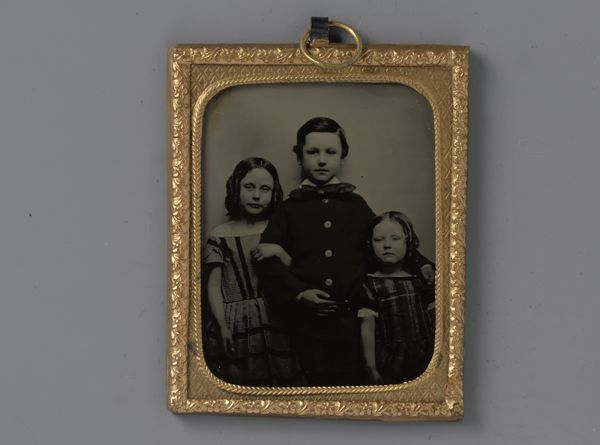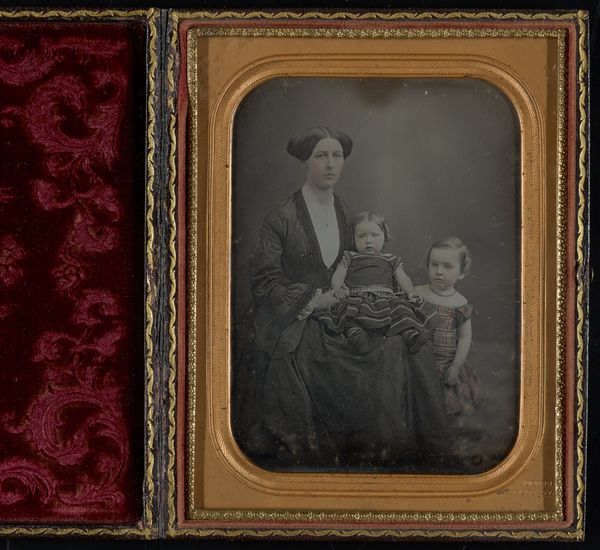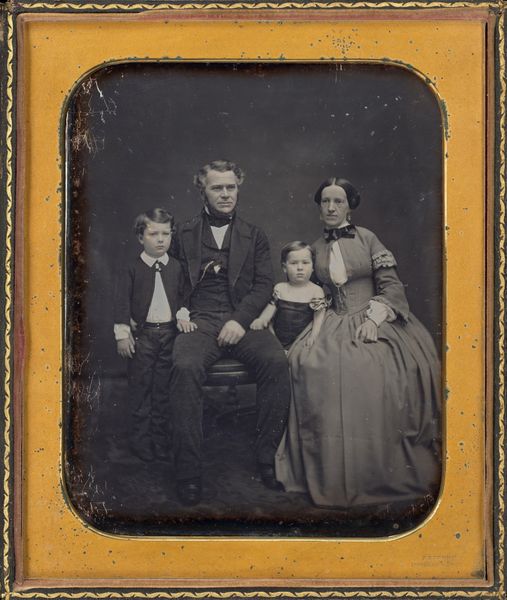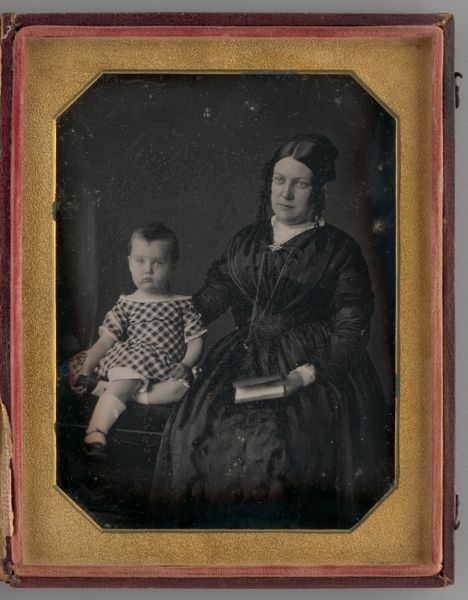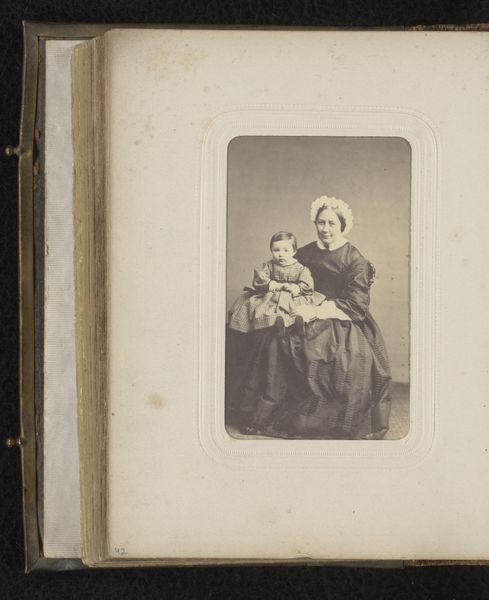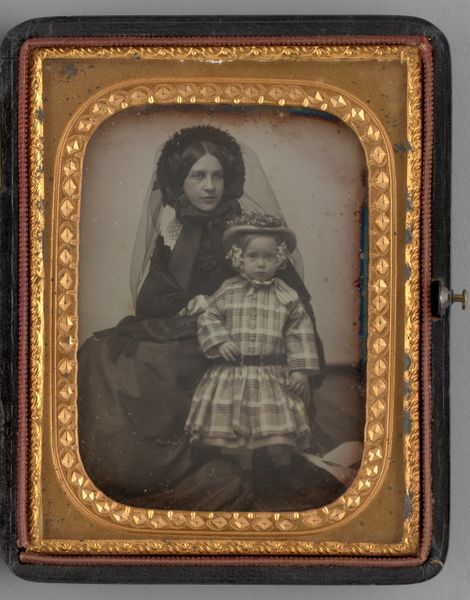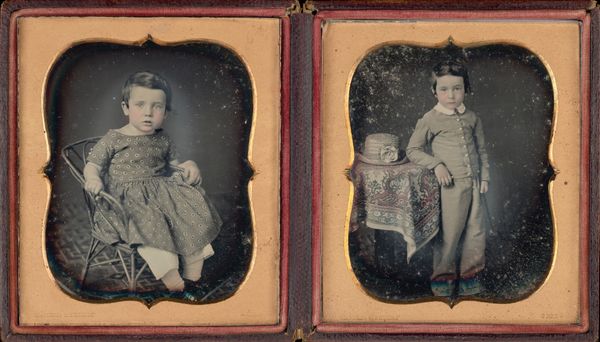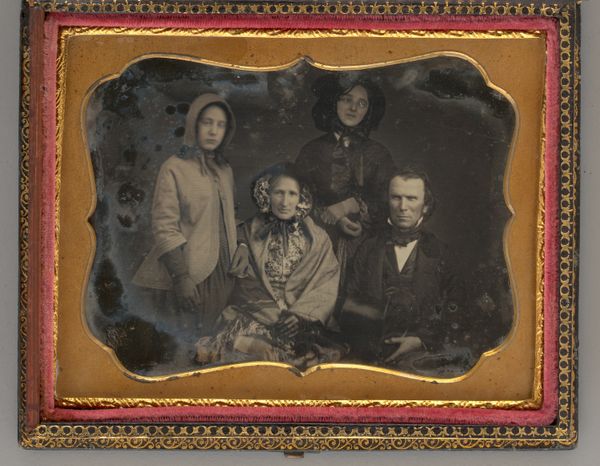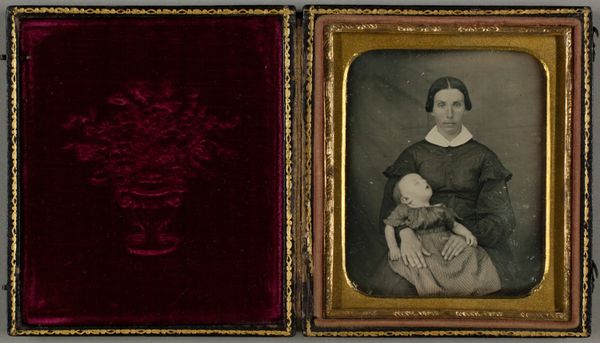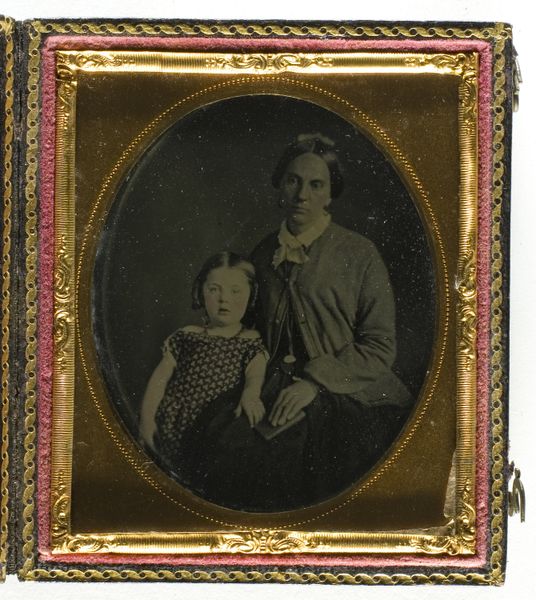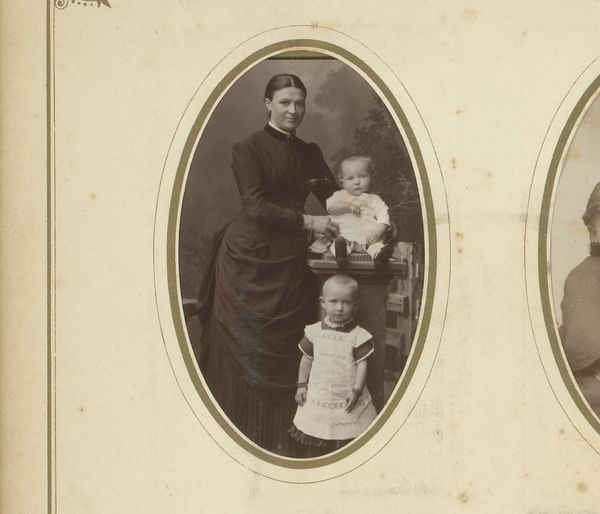
daguerreotype, photography
#
portrait
#
sculpture
#
daguerreotype
#
photography
#
romanticism
Dimensions: 10.7 × 13.9 cm (4 1/4 × 5 1/2 in., plate); 15.1 × 24.2 × 1.2 cm (open case); 15.1 × 12.1 × 2 cm (case)
Copyright: Public Domain
Curator: It has such a somber feel, doesn't it? Almost ghostly with its dark tones and slight imperfections on the plate. Editor: Indeed. The daguerreotype process tends to evoke that, but look closer, because it's an "Untitled (Portrait of a Man, Woman and Two Girls)" from 1847. These early photographs weren't just images; they were commodities of representation, weren’t they? Each family member involved, participating to a new mean of consuming art. Curator: Absolutely. You can practically see the labour involved. Consider the time and effort it took to produce even one of these images. Think about what that means for the family and what level of access was needed in those times, where the average person had very limited access to portraits. Editor: Let's look at it from a formalist view. Consider how the light catches the surfaces of the woman’s shawl, defining texture, or how the geometry of the father and two children in the frame adds compositional weight. It is incredible how the different textures bring together such a rigid portrait of what seems like a normal family. Curator: It makes you wonder about the economics of it all. Who was commissioning this image, and what narratives are being constructed through the posing, the clothing, and the almost tangible gravity of this work. Did it reflect the actual social dynamics? Editor: I agree. But the composition itself reflects a controlled aesthetic, wouldn’t you say? Look at the stark contrast between the black and white shades: dark and bright and reflect, but even darker, the overall atmosphere that reflects social standing, the structure. This simple duality of darkness and light serves almost as a philosophy. Curator: In the end, we can never look past how objects like these are entangled in these layers of class, labor and social performance. Daguerreotypes served as vehicles for portraying these very real aspirations. Editor: Perhaps. Though it's just as plausible to enjoy them on their visual terms too. The details, the way light interacts and captures an idea. An artwork which reminds us to admire the complexity and depth of images and art forms as such.
Comments
No comments
Be the first to comment and join the conversation on the ultimate creative platform.


